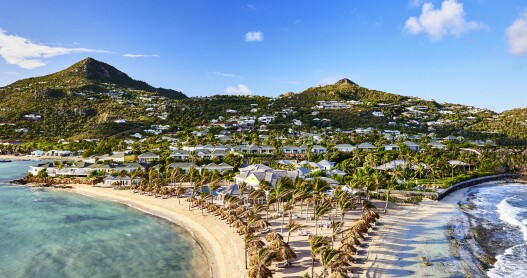Overview
When’s the best time to go to Jamaica?
Jamaica’s peak season runs mid-December through mid-April. The tourist crowd is at its highest from December through February thanks to breezy nights (a light jacket is recommended) and plenty of entertainment options. Little known is that discounts abound during summer and hurricane season, when crowds are few and temperatures only slightly higher. Room rates can get slashed up to 50 percent during this slow season, and it’s just as fun a time to go, if slightly quieter. Whatever time of the year you choose to venture to “Jamrock,” you simply can’t go wrong. Jamaica is the island that never sleeps.
How to get around Jamaica
Major airlines fly to Jamaica. Visas are not required of U.S. or Canadian visitors for stays of up to 90 days. Montego Bay’s Sangster International Airport is well-connected to the rest of the island via public and private transportation. Upon exiting the airport, hop into your resort’s shuttle or bus if you’re staying in Montego Bay. If heading to Negril and other parts, your best bet is to book a ride with Clives Transport Jamaica—an affordable, reliable, locally-owned company offering shared vans or private transfers.
Once at your destination, get the number of a trusted taxi driver from your guesthouse or resort. All licensed taxis have red license plates, but it’s safest to know your driver ahead of time. Individual drivers and tour operators offer long-distance excursions, or you can rent your own car with an international driver’s license.
Food and drink to try in Jamaica
You won’t ever starve on this foodie island. Jamaica has the best street snacks and shacks in the Caribbean—readily available, cheap, and tasty. From peanut pushcart vendors to jerk grills steaming roadside, and from stuffed patties and juicy fruits to windows dishing out boxed lunches of rice and beans with stew for under US$5, there’s no end to the belly-filling options. Casual restaurants and fine dining are just as satisfying; seating is often alfresco or seaside. Jerk centers are located throughout the island, perfect for families and anyone on a road trip, offering picnic-table seating and child-friendly menus of chicken and french fries. For the grown-ups, drinks don’t fall short, either. Early birds will love a cup of Blue Mountain coffee, and afternoons call for a cold Red Stripe and some bar hopping. Most locals grab a rum’n Ting while catching the sunset—Appleton dark rum or Wray & Nephew white rum with a splash of the Jamaican grapefruit soda called “Ting”—or a warm Guinness. Many tourists love their rum punch.
Culture in Jamaica
Every day in Jamaica is a cultural experience. Iconic activities include cooling off in the river, playing dominoes at the corner bar, stopping for jerk chicken or pepper shrimp roadside, dancing barefoot to live reggae on the beach, and hanging out late into the night at an impromptu neighborhood street party. Jamaica’s boisterous, fun-loving people have an intoxicating energy. Even if you’re just beachcombing in tourist havens Negril or Montego Bay, there’s no escaping the local flavor in Jamaica, and that’s what makes it “irie.” For more immersion, head to the hills of Cockpit Country and meet authentic Maroon and Rastafarian communities.
Jamaica is an island of year-round festivals, from food fests to annual reggae concerts and cultural celebrations. Keep a lookout for billboards and flyers, or ask anyone in town. Scheduling your trip around one of the festivals is a great idea, too. Pick either the first week of February for Bob Marley Birthday Bash celebrations and concerts in Negril, or July for the annual Sumfest concert in Montego Bay. If you’re into cultural ceremonies, don’t miss the Annual Maroon Festival in Accompong Town, held on the south coast during the first week of January. Then hop on over to the annual Jamaica Jazz & Blues Festival held the second or third week of January.
Local travel tips for Jamaica
As with any tourist destination, beware whom you befriend and trust your instincts. Generally, however, Jamaicans are some of the friendliest people in the Caribbean and want you to enjoy their country and way of life. Ultimately, beyond the gorgeous scenery, delicious food, and reggae music, it’s the people who make Jamaica a fun and fascinating destination unlike any other in the Caribbean.
English is spoken islandwide, as is patois.
The currency is the Jamaican Dollar, but U.S. currency is accepted everywhere. Just know the daily exchange rate because it often fluctuates.
Tipping is the norm, and it’s up to you how much you decide to give, as any amount is appreciated.
Electricity is on par with the U.S. and Canada at 110-120 volts, and unlike in many other Caribbean islands, the tap water is actually safe to drink.
Be aware that you may be approached, particularly in the tourist areas, with offers to purchase marijuana and other illegal drugs. Note that “ganja,” while plentiful on the island, is illegal! Tourism police and undercover cops regularly patrol the beach and tourist nightspots.
Road or beachside vendors can get a tad persistent, but a firm “no, thank you” will go a long way.
Crime exists in Jamaica as in any other destination, but the island is by no means unsafe to tourists. If anything, most Jamaicans go out of their way to ensure tourists are happy and safe. Petty thefts occur where opportunities arise—leave your valuables at home and don’t flash any jewelry or electronics.










